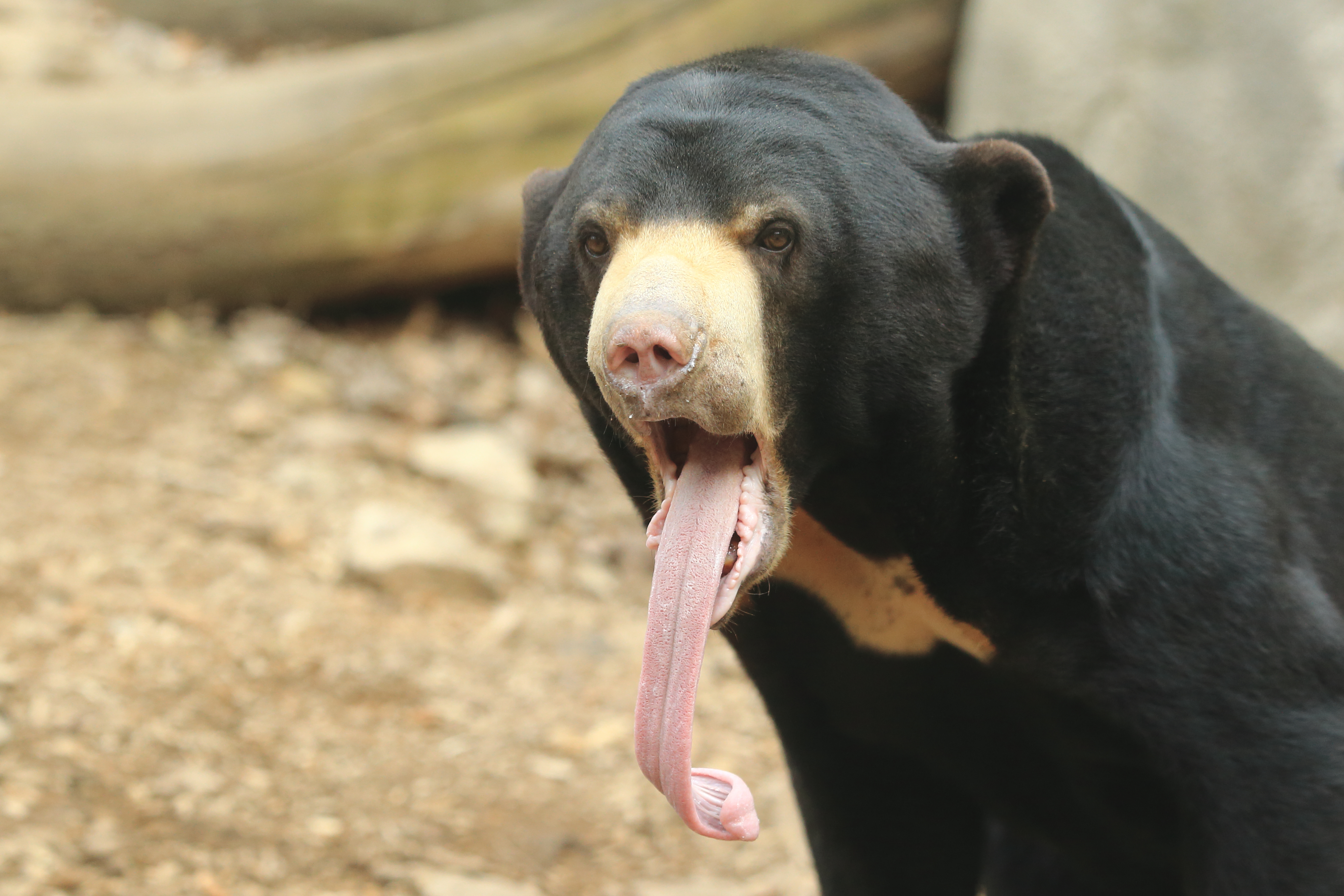The bear family is no stranger to being sizeable, standing firm at the top of the world’s largest land-dwelling carnivorans. Still, even the biggest groups have their smaller members, and the title for the smallest bear of all goes to a unique, freakishly long-tongued, and weirdly human-like animal: the sun bear (Helarctos malayanus).
The world’s smallest bear
The sun bear is the world’s smallest bear species, measuring in at around 1.1 to 1.4 meters (3.6 to 4.6 feet) long. That’s at least half the size of a polar or Kodiak bear – the world’s largest bears – which can reach up to 2.6 and 3 meters (8.4 and 10 feet) long, respectively.
Sun bears’ size shouldn’t be taken to mean that they’re not dangerous, however. They’re known to be aggressive, and best believe you do not want to be anywhere near an angry sun bear’s jaws and teeth, which are capable of ripping open trees.
Not gonna lie, though, it’s hard to take that seriously when you see their tongues, which are the longest in the bear family at a ridiculous 20 to 25 centimeters (7.9 to 9.8 inches) long. This helps them to reach tasty insects and honey hidden within the hard-to-reach crevices of trees and hives.

That’s one long-ass tongue.
Image credit: Eva Kohoutova/Shutterstock.com
Sun bears also feature a golden, crescent-shaped patch of fur on their chests, which is said to look like a rising or setting sun – hence the bears’ name. This isn’t just for show; sun bears display their patches as an intimidation technique when they feel threatened.
Sun bear-spiracy
Back in 2023, their unconventional appearance had half the Internet convinced that the sun bears living at Hangzhou Zoo in China were in fact humans in bear suits, thanks to a viral video in which one sun bear resident was seen standing on its hind legs. The folds of skin on the back of its body, as well as its diminutive stature compared to other bears, looked suspiciously costume-like to some.
It’s not impossible that a bear really does turn out to be a person in a costume, but that wasn’t the case here. Sun bears are just odd-looking lil’ guys, at least to us. Conservation expert Dr Ashleigh Marshall, of Chester Zoo, told BBC News at the time that although sun bears can “look a lot like people in their costumes”, the suspect in question was “definitely a real bear”, something the zoo also confirmed.
The skin folds are simply a helpful defensive adaptation; in the event of a sun bear being attacked, all that loose skin allows it to turn around and take a chomp at its attacker.
Small and vulnerable
In the wild, sun bears are native to the tropical forests of Southeast Asia. However, whilst they were once widespread throughout this region, they now exist there only patchily. It’s difficult to know exactly how many are left – even the IUCN doesn’t list the number of mature individuals – because they are shy, typically solitary, and elusive, but they are considered to be a vulnerable species with a population that continues to decrease.
While the illegal pet trade and human-animal conflict are also threats, that decline has primarily been driven by two key factors, one being habitat loss through deforestation. In the last 40 years, Southeast Asia is estimated to have lost between 20 to 80 percent of its forest cover, and the trend looks set to continue, with some estimates suggesting the region will have lost 75 percent of its original forests by 2100.
The other major factor in sun bears’ decline is poaching. While they are legally a protected species in their range, that doesn’t seem to have deterred people from hunting them for both meat and traditional medicine. There’s a traditional belief that sun bears’ gallbladders and bile have healing properties, and that’s resulted in continued poaching and even bear bile farming.
It’s a dire situation – but there are people working to save the sun bears, with conservationists carrying out rehabilitation and rerelease of rescued bears, conducting further research into the species, and most crucially, calling for strengthened law enforcement and better protection of the sun bears’ forest habitat.
“We must do everything possible to stop bears from being poached in the first place,” Siew Te Wong, CEO and founder of the Bornean Sun Bear Conservation Centre, told Mongabay, explaining that this means “we need to work with people.”
“The holistic approach is challenging,” Wong added. “But as long as we don’t give up and stay positive, one day we will achieve our goals.”
Source Link: The World’s Smallest Bear Isn’t Just A Guy In A Bear Suit, We Promise